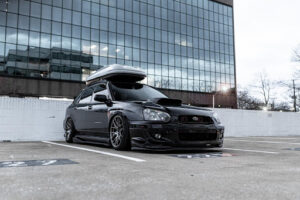A roof rack system is excellent for increasing your vehicle’s additional carrying space. But roof racks and roof rails are quite different. You must understand their main differences before deciding on the right solution for your car. Simply put, roof rails provide mounting points, and roof racks are carriers that allow you to carry anything from bulky kits to bikes without damaging your vehicle.
Use this roof rack versus roof rail guide to determine the ideal option, depending on your requirements. Read on to learn these differences and how you can choose the right roof rack Ford Ranger.
Differences Between Roof Rails and Roof Racks
The main difference between roof racks and roof rails is their location. Roof racks run from door to door across the vehicle’s roof while roof rails run the vehicle’s roof to the back. Another key difference is that racks tend to have more than two crossbars while rails have only two.
Roof racks
Roof racks also called crossbars, provide more room for carrying cargo. Crossbars are tailored for transporting cargo and equipment on the car’s roof, so the weight is evenly spread out to avoid damaging your vehicle. Racks provide more load-carrying capacity than rails.
The aftermarket is enormous, meaning customers have a wide variety of options. Renowned brands like Rhino and Thule provide many types of racks. The right roof rack for your vehicle will depend on your transportation needs. The sheer variety of options in the market will make it simpler to find a rack that provides the proper weight carrying capacity, style, size, shape, etc.

Roof rails
Roof rails are often factory-mounted on large vehicles like 4×4 vehicles and SUVs. There are two primary forms of roof rails – flush and elevated. Let’s discuss them in more detail.
- Elevated rails. Elevated roof rails have underneath space that makes it convenient to clamp racks into position or tie ropes. There is a one to two inches gap between the rail and the vehicle’s rooftop.
- Flush rails. Flush roof rails are usually mounted against the vehicle’s roof. Therefore, no gap allows you to attach ropes and ties like you would with elevated roof rails. Although it’s impossible to use ropes or ties to secure your load, flush rails are sleeker, more fuel-efficient, and aerodynamic.
Installation
Rails come pre-installed with the car, so you don’t have to worry about installing them on your own. Installing accessories is relatively straightforward but will depend on your storage solution and the type of roof rails you have.
A professional installer must install roof racks; your vehicle’s roof and the selected system will influence your choice of roof racks. The rack is clamped into the vehicle’s door jamb during installation, but there are many other options. There is a permanent mounting option that involves drilling the vehicle’s roof. Still, it is less popular, and a specialist needs to install it to avoid complications such as water damage.
Professional installers are knowledgeable and can help you choose the right roof rack to suit your needs. They also inform you beforehand of the risks of exceeding the rack’s maximum weight limit. Many people often ignore the dangers of overloading a car’s roof. An overloaded rack puts the vehicle and its passengers at risk. It can void your auto insurance claim if your car is involved in an accident and your insurance provider discovers your vehicle’s roof was overloaded.
Benefits of Roof Rails
Roof rails provide a brilliant fix point for attaching accessories and other bars. Since they are not carriers on their own, they can be convenient if used with an attachment. After installing the crossbars and the necessary attachments, it’s pretty convenient to transport various cargo types.
However, the rail bar often poses weight limitations to about 50kg, impacting the cargo your vehicle can carry. These weight limitations mean you cannot mount racks onto the roof rails. Roof rails are suitable for people who don’t transport much cargo.
A roof rail is a design feature that provides a platform to mount various accessories while a rack is installed on your car to transport bulky luggage and kit.

Benefits of Roof Racks
Rack systems are ideal for various people, including campers, tradespeople, adventurers, sports enthusiasts, etc. It allows you to conveniently carry additional cargo and awkwardly shaped and more oversized items like kayaks. You’ll find roof rails quite handy if you intend to transport bulky cargo regularly.
The vehicle manufacturer’s requirements and the amount, shape, and size of your cargo will influence your choice of roof rack. Some general racks like a box allow you to carry a vast range of cargo, while others are more specific, designed to transport heavier luggage like kayaks or bicycles. Racks are preferred by many because they allow them to transport more oversized cargo and heavier weights.

The Bottom Line
Now that you know the difference between roof racks and rails, it’s clear how they operate. It’s imperative to understand the ins and outs of vehicle roof systems before you make your buying decision. It allows you to transport your cargo and avoids damaging your vehicle safely and conveniently.
With the knowledge you’ve gained from this guide, you can confidently assess the roof rack and rail systems on the market and make an informed decision. Finding a roof system that meets your transportation requirements has never been more straightforward!



